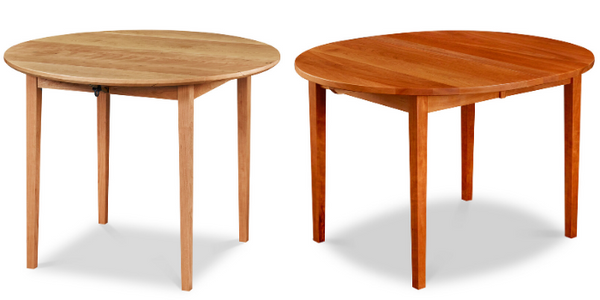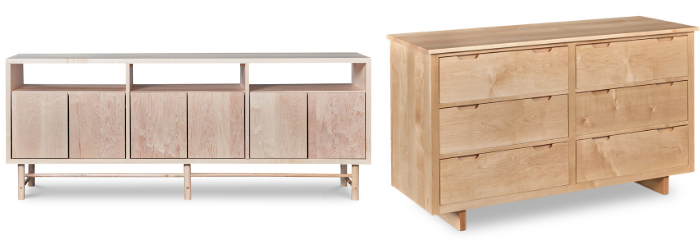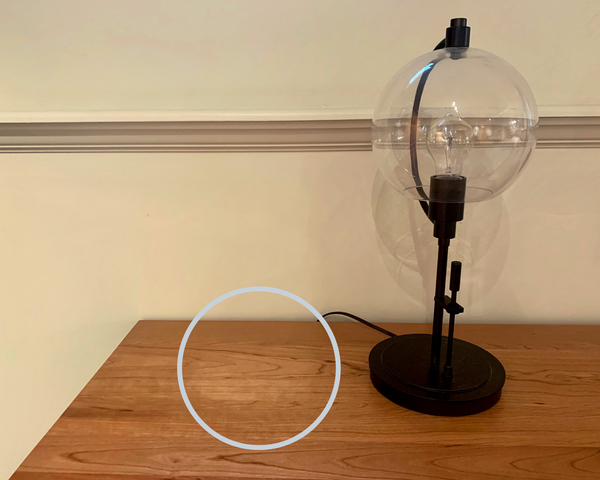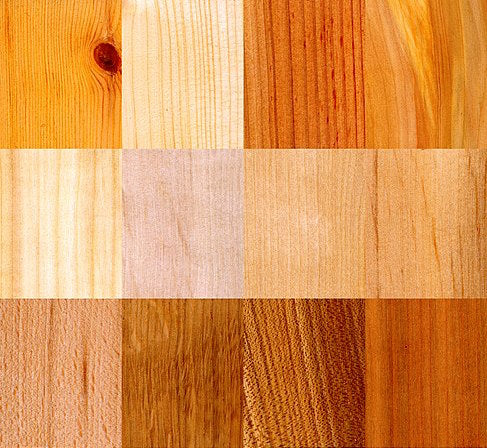Just as our skin is affected by sunny beach trips and drinking the recommended eight glasses of water per day, wood, too, responds to its environment. Once a living, breathing tree, natural wood furniture will continue to evolve even after the last edge is sanded and corner finished. One of the coolest phenomena is the continuing aging process of wood as the colors change appearance over time and a wonderful patina develops.
Hardwood Color Changes Over Time
All hardwoods will undergo the natural aging process and change color overtime with exposure to UV light and oxygen. In general, while lighter woods tend to become a bit darker and richer, woods that begin dark will lighten up.
We all know and love cherry as a rich reddish brown color. However, freshly cut cherry boards have a light color much closer to straw. At Chilton, we personally love the look at this early stage of the wood, but the surface is so light, that it is often confused with maple. Within a few weeks, change is noticeable, as hints of red begin to develop, though the wood is still light. It will take about six to 12 months to reach that rich dark hue that so many people have come to expect with cherry, depending on light exposure, and this reddish tone will only continue to deepen as time goes on.

Comparison of newly built cherry table with light straw color and naturally aged cherry table with deep red color.
Like cherry, maple will darken over time, though far less dramatically. Maple starts off very light and bright, with a few pink and grey tones. Over time, it will age to a warm golden honey color. Other light brown woods, like ash and white oak will slightly darken to a beige or amber color.

Comparison of newly built maple media stand with light pink color and naturally aged maple dresser with golden honey color.
Of the primary woods Chilton offers, walnut is the most different in its aging process. Rather than darkening over time, walnut begins as a beautiful, rich dark brown color and over time will gradually lighten, taking on notes of honey throughout.
Why Does This Happen?
The two main culprits for this mysterious color transformation are exposure to air (oxidation) and light. When the wood surface interacts with air and ultraviolet light, the process is set in motion, and it can’t be stopped (unless you live in a dark cave), but it can be sped up a bit, especially with cherry. You will see the majority of the darkening process naturally occur within the first year (and significant changes start within the first few weeks and months). But if you can’t wait that long, try setting your chair on the porch or moving your dining table in front of a large window on sunny days. The added light will provide an extra boost to the aging process so you can experience richer cherry tones sooner.
In addition to the effect from its environment, wood color can vary greatly between trees and even along different boards from the same tree. This variation adds natural character and beauty to your wood furniture.
Avoid Shadowing
One word of caution - prevent shadowing by periodically moving around objects on your wood furniture, especially on cherry. If you leave a lamp on your brand new cherry side table for two weeks, you will notice a lighter circle from the lamp base surrounded by a darker table top. Has this happened to you already? Not to worry - simply move the lamp and that shadow will soon catch up with the rest of the piece and the color will even out.

Portion of cherry dresser (in circle) is "shadowed," or appears lighter, caused by lamp left in place for too long (now moved to right) preventing sunlight from hitting that portion of the dresser.
We love the warm, natural texture of all wood species, as well as the living quality each wood type offers as its patina evolves. Treat your wood furniture well, be gentle on its surface, and we hope you too can savor every color stage.


3 comments
Thanks for this helpful article. Are UV protectants in the finish effective to lessen color change in either white oak or maple? Is stained red or white oak less likely to change color with sun exposure? Thanks
I have a very light bird’s eye maple dresser. One side has a large discolouration caused by the sun.
A red/ amber colour. It has been beside a window for four years, but it is just showing now on the one side. How can I bleach this out? Thanks
Thank you for answering my question. I appreciate your providing the opportunity to ask questions and answering them. Sincerely, David Buckner
Leave a comment